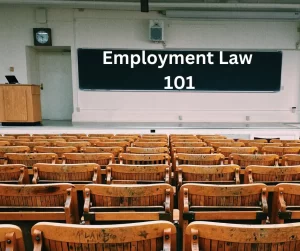
Under Washington State laws and court rules, how does a plaintiff commence a civil legal action (i.e., civil lawsuit)? Here’s my point of view.
(IMPORTANT: All hyperlinks in this article with an asterisk (*) will take the reader away from this website to an external website. This article is for informational purposes only and is based upon my point of view. Due to the rapidly changing nature of the law, we make no warranty or guarantee concerning the accuracy or reliability of the content in this article. No content on this site, regardless of date, should ever be used as a substitute for direct legal advice from your attorney. Please review our Disclaimer | Terms of Use | Privacy Policy before proceeding.)
In Washington State civil litigation, the commencement of a legal action is a critical step that sets the stage for the entire legal process. Let’s delve into the key aspects of initiating a civil action as outlined in the state’s rules and statutes. NOTE: this article only addresses commencement in Washington State Superior Courts*.
How to Commence a Civil Legal Action
Except as provided in Washington State Superior Court Civil Rules (CR), CR 4.1*, a civil action in Washington State can be commenced in two primary ways:
1. Service of Summons and Complaint:
The action is initiated by serving a copy of a summons along with a copy of the complaint, as outlined in Rule 4* of the state’s legal procedures. This service of documents is a fundamental step in officially notifying the defendant of the legal proceedings against them.
2. Filing a Complaint:
Alternatively, a civil action can also be commenced by directly filing a complaint with the court. This formal submission of the complaint initiates the legal process and sets the case in motion.
See CR 3*.
Timely Response and Filing Fee Requirement
Upon commencing the action, there are specific timelines and requirements that parties must adhere to:
Written Demand for Filing:
If any other party in the case makes a written demand, the plaintiff instituting the action must pay the filing fee and file the summons and complaint within 14 days after service of the demand. Failure to do so renders the service void.
Effect on Statute of Limitations:
It’s important to note that an action is not considered commenced for the purpose of tolling any statute of limitations unless specified otherwise in RCW 4.16.170*. This statute outlines exceptions where the commencement of an action may affect the timeline within which legal actions can be pursued.
Ensuring Legal Compliance and Timely Action
Complying with the rules regarding commencement of civil actions is crucial for all parties involved. It ensures that legal proceedings are initiated in a timely and legally valid manner, preventing potential disputes or challenges regarding the validity of service or commencement.
CONCLUSION
Initiating a civil action in Washington State involves careful adherence to procedural rules regarding service, filing, and responding to demands. Understanding these rules and timelines is essential for legal practitioners and parties involved in civil litigation, ensuring a smooth and legally compliant commencement of the legal process.
—–
*NOTE: Links with a single asterisk (*) will take the reader away from our website to an external governmental website.
Read Our Related Articles
We invite you to read more of our articles related to this topic:
» Employment Law 101: Statute of Limitations
» Employment Law 101: The Complaint
» Employment Law 101: The Defendant
» Employment Law 101: The Summons
» Tolling and Commencement Are Reconcilable (WA State)**
» WLAD Statute of Limitations: Equitable Tolling
—–
**NOTE: The link will take the reader to our Williams Law Group Blog – an external website.
LEARN MORE
If you would like to learn more, then consider contacting an experienced attorney to discuss your case. This article is not offered as legal advice and will not establish an attorney-client relationship with Law Office of Gregory A. Williams or the author of this article; please refer to our Disclaimer | Terms of Use | Privacy Policy for more information.
–gw


